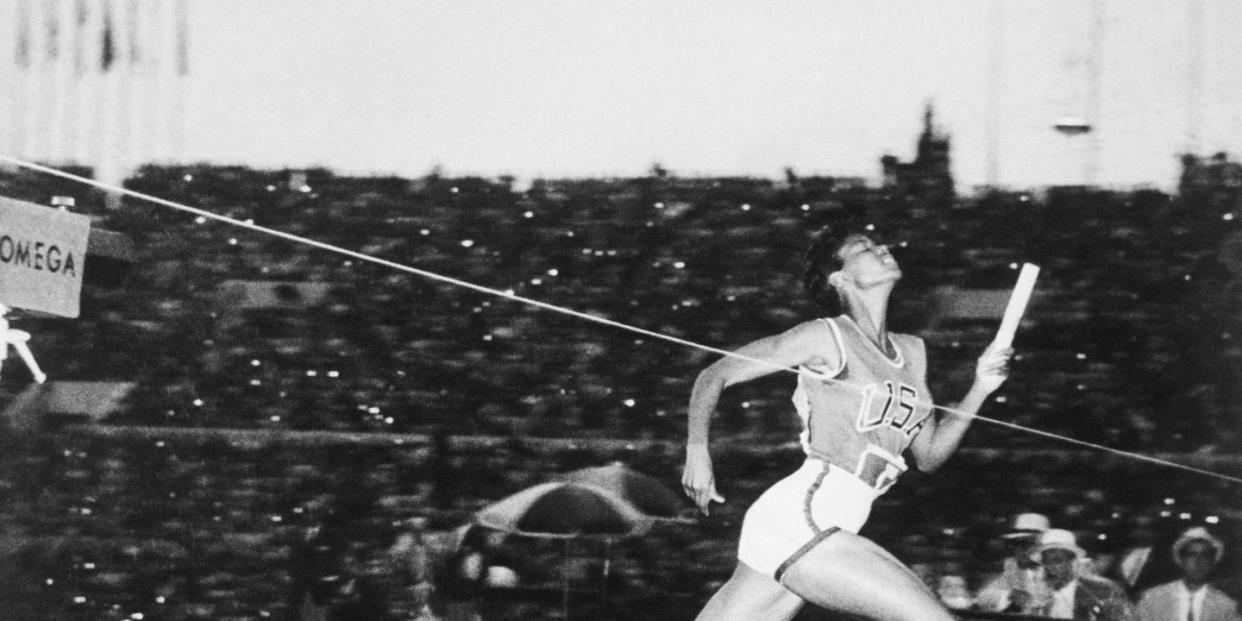Racing to Perfection

- Oops!Something went wrong.Please try again later.
As the 1960s arrived, my older sister, Denise, and I were always looking for ways to insert ourselves into tales of glory and glamour, especially when they starred Negroes. Denise did Imperious better. I did Luminous better. Denise had longer, better-defined legs; I had a smaller waist and fuller breasts. Denise was statuesque. I was diminutive. We brought our uncertainties along, likewise our vanities. We told these tales through our needs.
THE BLACK FEMALE BODY
These days we boldly study the ways in which it was mocked, maimed, degraded. We honor the scars and fragments; we give them meaning. We investigate the black female body’s present, consider its future possibilities.
THE BLACK FEMALE BODY—
resides now in the sanctum of historical analysis and artistic reinvention. We savor its revelations. We do not fear it.
But so many of us once did. Its public display, its interpretation by strangers or enemies, stirred unease and ambivalence—shame—in black women everywhere.
“Wilma Rudolph and the Tennessee Tigerbelles,” Denise would shout all through the summer of 1960. I’d echo her as we cheered their Olympic track and field victories on TV.
The Tennessee Tigerbelles were the women’s track team at historically black Tennessee State University. Their black coach, Mr. Ed Temple, groomed them for national and international success. Groomed is the correct word, for they were taught, rehearsed, their diets, wardrobes, speech, grades tended to, via scrutiny, exhortation, and reproof. They were servants for a greater cause and determined to prove they were the equal of male athletes. These girl runners began winning Olympic medals in 1952, the same year that the historically white University of Tennessee admitted its first black student. (A man.)
We cheered and we ogled the magazine photos of Wilma’s body in motion, crouching, launching, straining, elevating. My sister Denise’s legs were long, muscular, and brown, like hers. But Denise was a dancer, and every week those forceful limbs of hers were being refined by ballet aesthetics.
Unadorned by dance technique, the athletic female body was an instrument of pure competitive skill and drive. Especially the black female body, which lacked stock footage of ideal feminine norms. It was thrilling to see the Tigerbelles in action on the track, but to keep seeing them in photos became embarrassing.
That’s how I remember it anyway, though research shows that my squeamish self-surveillance got certain things wrong. In fact, according to Time magazine’s “The Fastest Female” feature of September 19, 1960, Wilma Rudolph was setting a feminine standard for white as well as black women: “From the moment she first sped down the track of Rome’s Olympic Stadium, there was no doubt that she was the fastest woman the world had ever seen. But that was only part of the appeal of the shy 20-year-old Negro girl from Clarksville, Tennessee. In a field of female endeavor in which the greatest stars have often been characterized by overdeveloped muscles and underdeveloped glands, Wilma (‘Skeeter’) Rudolph had long, lissome legs and a pert charm that caused an admiring Italian press to dub her ‘the Black Pearl.’ ”
This was standard movie star soubrette praise. Why were we so defensive?
Girls in our world and time had to struggle for permission to love sports, and their chances were better if they kept the love talk down. Sports weren’t about to get them into good colleges. Sports weren’t going to provide them with good professions after college. Sports weren’t going to make them better marriage material. The serious pursuit of sports was for girls who didn’t have other intellectual and social opportunities. We knew the drill. Girls like Denise and me were meant to prove that our people could do other things at least as well as we’d always done sports.
For the belittled, the depreciated, and the despised, pride in an outstanding achievement stirs foreboding. (1) You fear a blunder will undermine it all: a flawed display of manners (a clumsy gesture, a speech pattern that’s too rural, too black dialectical), which threatens to expose some aspect of the inferiority the achievement was supposed to disprove. (2) You dread public retaliation in some form: a renewed public insistence on your lacks; a reinvigorated belittling of your success.
Our own squeamishness was a self-administered, anticipatory punishment.
If the Tigerbelles had been white women, I’d have studied their bodies and uniforms with calm interest. I’d have noted the forthright competence of honed limbs and worked muscles. Not the rounded smoothness I craved at that stage of life, but not a threat. I would have been much less stirred by them.
I feared their publicity was inviting any and all white people to be on intimate terms with their bodies and their absolute will to win—to stretch, heave, grimace if need be as the finish line approached. Biological facts weren’t facts then. They were prompts. Prompts for race and sex presumptions. Denigrations.
But the fact is, I was intensely stirred by the Tigerbelles. The fact is, they were outracing those presumptions and denigrations to pioneer fearless, virtuosic black female bodies. They entered sports history with 23 Olympic medals, 30 medals in the Pan American Games, and 34 national team titles. And the fact is,
I never worked as hard at anything, in high school or college, as Wilma Rudolph, Barbara Jones, Lucinda Williams, and Martha Hudson worked to become Tennessee Tigerbelles.
Running to meet the best in themselves.
You Might Also Like

